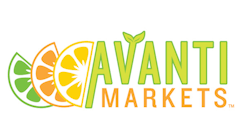How To Maximize Micro Market Promotions
Micro markets have changed many things about the convenience services industry, including how operators look at consumers. Once, sales information was only available as broad pullthrough numbers based on what products the route driver needed to restock in the vending machine. Even with modern vending machine telemetry and item level tracking, operators are blind to the individuals at the machine and what product they might want to purchase.
It is different with micro markets. Micro markets allow a more detailed analysis of end users and what products they are buying, and therefore might buy. This is the ideal situation because the more operators know about their customer, the better they can build meaningful promotions and ultimately improve sales and value. The right promotion, for example, can encourage an end user to skip the café or conve nience store on the way into work in favor of visiting the micro market. This action indicates that the customer trusts the micro market and values its service and products.
It can be daunting for operators to plan, execute and measure micro market promotions with all the other business operation needs upon their shoulders. However, by taking advantage of strategic technologies that micro market suppliers already offer, operators can more easily achieve all their micro market promotion objectives.
Get in the promo mindset
“The main thing that we talk about with our operators is ‘How do we get your customers to bypass every gas station, grocery store, etc. on the way into work because they have the micro market onsite?’” said Anthony Danna, director of international sales at Three Square Market.
Danna’s answer is promotions, specifically those tied to a market account. With as many users as possible signed up for an account, operators are able to take advantage of coupons, rewards, loyalty points and more, he says.
Mike Johnson, a co-founder of Yoke, also stresses the importance of micro market accounts as they create more opportunities for sales and touchpoints.
“When you go from a vending machine to a micro market, you see a revenue boost just from the change in platform,” said Johnson. “But the huge opportunity, and where the lightbulb is going on for some operators, is how micro markets provide an opportunity for customer engagement.”
Now it is not just someone putting money into a machine, indicates Johnson. Now it’s about operators identifying that customer and driving up customer retention through engagement.
“Our operators have figured out that the lifetime value of that registered micro market customer is four times as much as an anonymous customer,” said Johnson. To take advantage of the lifetime value of the customer, Yoke’s platform, called Yoke Portal, offers a loyalty program based on the points-for -purchase model. It defaults to the customer earning 2 points for each $1.00 spent and/or for each $1.00 loaded onto the account.
“It helps the customer earn market rewards really fast,” said Johnson. “It gamifies it, which consumers like. Plus, it engages. Lastly, the money being electronic motivates customers to spend faster. It’s the psychology of electronic money not seeming as real as cash.”
Operators are able to adjust the point threshold of the program as well. “They can see what 80 points equals from a sales standpoint or a reload standpoint,” said Ben Thomas, co-founder of Yoke. “They can adjust it so that what the customer earns for the points makes sense [for the operator and the region].”
Yoke isn’t the only micro market technology supplier that allows operators to create a points-for-purchase promotion. Most of the major suppliers do, including Avanti Markets.
Mobile promotions
John Reilly, president of Avanti Markets, gave a presentation of Avanti’s new technology and features, which included the addition of loyalty points under the “Avanti Advantage” program.
“The loyalty program is all about engaging with our customers,” Reilly said. Operators can set the loyalty points based on purchases and/or visits. All the point redemption details as well as products and prizes that result in points are available to the consumer via the mobile app, while operators can access it on the backend.
Consumers are expecting to see these types of loyalty point programs and will use them, says Danna from Three Square Market. “This model is what all of the major retailers/airlines have been implementing and our operators have the same access to custom build their own loyalty system,” he said.
Three Square Market offers the ability to customize the products that can be part of the loyalty program as well as the point value. The customer has the option to pay with points once enough are accrued.
Setting bundled deals
Another key micro market promotion that operators can use is the ability to set prices and discounts when the consumer purchases multiple items.
“When we are talking with our operators, we are always speaking about transitioning from a traditional vending mindset of single item purchases to ‘How do we get every purchase to be multi-item?’” said Danna. With a backend system that allows for “meal deals,” the operator can set up specific items within categories, such as a meal promotion that offers chips and a drink for a certain dollar amount along with the purchase of a sandwich.
“It’s our most popular promotion,” Danna said.
Bundling items together can work for encouraging sales at various times throughout the day. For example, Danna explains that coffee draws consumers into a micro market. How then can operators capitalize on those coffee visits? He suggests tying a coffee purchase with a breakfast item such as a flapjack, muffin or breakfast bar.
For the time between breakfast and lunch and between lunch and the end of the day, consumers may come into the micro market looking for a hold-me-over snack or drink. Through the Three Square Market system, operators can create a snack deal, such as a protein bar and bottle of water.
“You are now enticing them into a second purchase,” said Danna. It also creates more constant foot traffic throughout the day, eliminating times when there are no sales.
“With our system, you can pull reports for specific times during the day,” he said. “Once you’ve identified those ‘lack of sales’ periods in a day, you can run coupons at those specific times. Once advertised correctly, it will bring a more consistent footfall within that location and you will see sales that previously would not have happened in those periods.”
Being able to set the timeframe of coupons is especially helpful for operators. Three Square Market allows operators to customize the times of day or days of week/month that the coupon will work. It can even be pre-scheduled, allowing the marketing team to plan next month’s promotion while the current promotion is happening.
Advertise the promotion
Letting consumers know about the promotions and loyalty programs through advertisements is critical to success. Technology is making this easier and ensuring operators can reach customers when they are in a position to buy from the micro market.
Avanti’s mobile app, for example, allows operators to use push notifications, where discounts and sales are sent via the consumer’s smartphone at a designated time and place. “This is great for your high-volume accounts or where you want to push fresh food during certain times of the day,” said Reilly.
Marketing at the point of sale is also quite effective. The VE Kiosk 2.0 offers the ability to display both video and still advertisements on the VE Kiosk, explains Jim Coia, vice president marketing and key accounts for Vendors Exchange.
“These [advertisement] tools can be used to drive promotional sales and communication along with advertising revenue,” Coia said. “The loading of this content is all handled via our online kiosk management portal. The ads can be programmed with start and end dates aligned to correspond with promotions.”
With Three Square Market, the operator has the ability to set up campaign advertisements, which can be a set of single ads or multiples.
“We advise our operators to schedule these advertisements to work in tandem with the coupons that they are setting up,” said Danna. “If a coupon is only valid for the hours of 9 to 11 a.m. and 2 to 4 p.m., the advertisements can be set up to mirror those times as well.”
It’s a solid plan that has worked for operators focused on growing markets.
“We worked directly with one of our operators who has 55 markets,” explained Danna. The operator was not previously using advertisements or coupons. Once implemented, these promotions produced a 21 percent increase in sales in the first month. The number leveled off to a 16 percent average over the next five months. It also kept the micro market in the mind of the end user.
“[Our operator said] customers stated that they were now more aware of the places to look for the deals and promotions,” said Danna. “They also started to understand that there was a rotation of every two weeks switching up the promotions. Customers were looking for the different products being discounted.”
Easy customization
The backend system needs to be easy to use and helpful in preparing and executing promotions to really be valuable to the operator. Linde Hutson, head of marketing and communications for 365 Retail Markets, says 365’s ADM backend management software guides operators through the creation of promotions, from “tender” to “bundling.” Operators can filter for location type, device, discount amount consumers will receive, timing and duration. All of this can be done remotely, so the operator does not have to visit each individual micro market.
“We give operators the ability to customize nearly every aspect of the promotion to meet their specific needs,” said Hutson. “Operators can determine when the promotion will be active, where it will apply, the discount consumers will receive and the products or payment methods that will be associated.”
One of the most successful types of promotion for 365’s micro market operators is the “giveaway,” in which end users who participate are entered into a contest to win a very large prize, such as a car.
“This really drives sales up and increases consumer participation,” said Hutson.
Collaborating to produce more
A recent large-scale promotion done in partnership with advertising company Advana drove a lot of visibility and impressions on a product for a 365 operator. It was so successful that 365 is opening up the partnership opportunity to more of its operators.
“We are partnered with Advana... which offers a list of curated promotions that operators can opt into instead of having to find and manage the promos themselves,” said Hutson. “Promos are great for moving products that have rebates associated with them or to avoid spoiling out products, driving more sales.”
Advana and 365 Retail Markets aren’t the only partnerships in the works making promotions easier. VE offers collaboration with USA Technologies, Inc., and a variety of vending management systems (VMS).
“Promotions can be executed via price in the operators VMS, and then communicated via on screen advertising or through the USAT More Card platform,” said Coia about the VE platform. The More Card platform also offers operators the ability to communicate the promotion via email to customers and can be coupled with on-VE Kiosk advertising.
Three Square Market is working with buying group Unified Strategies Group (USG). “Our platform is completely integrated with USG,” said Danna. “USG sends us rewards programs that they are running with their members. With our integrated platform, the USG/Three Square Market customers can easily apply these rewards programs to their markets by a couple of clicks of their mouse.” The rewards are set up so that a customer buying a certain amount gets a certain amount free or discounted.
“The platform takes the thinking out of it for our operators as USG makes these promotions for them and the operator can apply as many as they would like or as few as they would like,” added Danna.
Looking to locations for partnerships
Collaboration is not just happening between companies and associations, but with customers. Yoke operators are collaborating with their locations, offering the ability to reward employees using the micro market.
“Our current dashboard allows the operator to offer both Yoke cash and Yoke points as incentives and rewards that can be combined with the host location,” said Johnson. “Let’s say the location feels everyone had a great quarter -- made their numbers. The location cuts the operator a check for $1,000 and the operator distributes $10 of Yoke cash to everybody’s account.”
Johnson argues that not only does this engage the customer and add value to the micro market, but it also forges a stronger provider-customer relationship with the location.
“While no operator wants to lose an account, it does happen. Contracts end, new employees are looking for something different. If all the company has to do to switch out the operator is remove the kiosk, that’s easy. But if that company has 500 or 1,000 employees with accounts, with cash on those accounts, with bonus points, then that’s different. That’s sticky. It’s difficult to undo,” said Johnson.
Three Square Market offers the ability to do similar partnership programs funded by the location.
“We also encourage our operators to set up subsidies at locations for pre- 8 a.m. and post- 5 p.m.,” said Danna. “If communicated correctly to the location of the micro market, the location will generally offer subsidized purchases for employees that are either coming in early or working later into the evening. We have seen these set up as 100 percent discounts or minor discounts in the 5 to 10 percent range.” At the conclusion of the month, the operator pulls a report from the Three Square Market system for the subsidized discounts. After tallying the amounts, the operator sends an invoice to the location.
Promotions become less foreign
It is difficult to undo habits, but operators looking to grow their micro markets are changing how they look at marketing and promotions.
“Promotions were never important before, never important to getting more sales,” said Thomas. “It’s difficult to change that thinking, but operators see the impact of promotions as they go from two markets to five markets to 10 markets. It’s more juice squeezed from the fruit.”
Micro markets are a retail space, and operators approaching marketing with that retail mindset will succeed. The micro market technology providers keep innovating and making their backend systems more robust to better support these operators. Together the industry will be in a better position to produce and deliver promotions which engage and add value to the end user.

Emily Refermat
Emily began covering the vending industry in 2006 and became editor of Automatic Merchandiser in 2012. Usually, Emily tries the new salted snack in the vending machine, unless she’s on deadline — then it’s a Snickers.
Emily resigned from Automatic Merchandiser and VendingMarketWatch.com in 2019 to pursue other opportunities.








